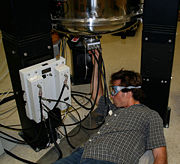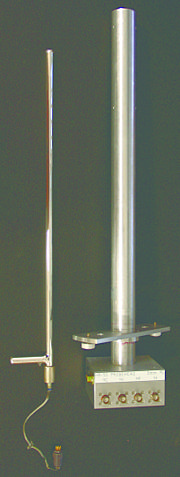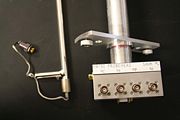Moving tube NMR(v2)
From NMR Wiki

The first moving tube experiments (as described in the publication) were performed by moving the tube manually. The following picture shows graduate student Kevin J. Donovan beneath the 500 MHz magnet during a moving tube experiment.
Moving Tube NMR [1, 2] is a technique that uses a long NMR tube (approximately 5 feet) that is moved incrementally between scans. The purpose of this action is to remove the relaxing sample portion from the coil and replace it with a pre-equilibrated sample portion, thus skipping the relaxation delay. This technique facilitates experiments requiring a long relaxation delay which may otherwise be too time consuming.
A more detailed description and demonstration of the moving tube technique is given in the publication [1].
For a guided tour of a Moving Tube NMR system, including the automated tube-moving apparatus, see the youtube video [2].




